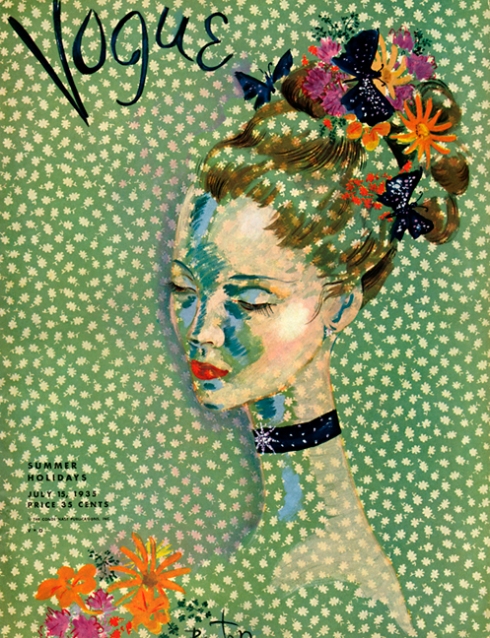Yesterday’s tranquil afternoon filled my soul with excitement and overwhelming joy for it rained heavily and dark clouds pervaded the sky. I was listening to Chopin and reading Shelley’s poems by candlelight, relishing in the sounds of wind whispering through the trees, and a peaceful birdsong. I couldn’t have hoped for a more atmospheric afternoon! Then suddenly, the sky turned golden, mottled with purple, like in one of Turner’s paintings. After a picturesque storm, all was calm again. The love story of Mary and Percy Shelley, one of the wildest and most interesting romances in history, was on my mind the entire afternoon.

Mary Shelley was born on 30 August 1797. Her mother, Mary Wollstonecraft, was a philosopher and the founder of feminism, and died ten days after the birth of her daughter Mary. Mary’s father was William Godwin, a fellow philosopher and a prominent thinker, and the first modern proponent of anarchism. As she grew up, Mary accepted her mother’s liberal attitudes and outspokenness, and soaked up her father’s ideas like a good pupil. She was eager for knowledge from a young age, and growing up in an intellectually fruitful environment had served only to increase her intellectual curiosity. She met Wordsworth and Coleridge as a child, for they had been her father’s guests, and, along with excessive reading, she was taught by her father a great variety of subjects.
 1797. Portrait of Mary Wollstonecraft by John Opie
1797. Portrait of Mary Wollstonecraft by John Opie
All in all, she had received a sophisticated, the least to say, an unusual education for a girl at the time. Her father described her at fifteen as ‘singularly bold, somewhat imperious, and active of mind. Her desire of knowledge is great, and her perseverance in everything she undertakes almost invincible.‘ Still, Mary’s childhood had a dark side too. Firstly, she was aware that no matter how innocent she may be now, she had caused her mother death, and this thought seemed never to have left her. Secondly, her father remarried in 1802 to Mary Jane Clairmont who brought her own two children into the marriage. Mary never got along with her stepmother.
 1775-1800. A Welsh Sunset River Landscape by Paul Sandby, showing rather better weather than most ‘sublime’ landscapes
1775-1800. A Welsh Sunset River Landscape by Paul Sandby, showing rather better weather than most ‘sublime’ landscapes
Lonely and isolated, young Mary could often be found reading by her mother’s grave, relishing in the tranquility, in the behold of her mother’s spirit. She also liked to daydream, escaping the difficulties of reality into a world of imagination. It was during her two stays in Scotland in the summer of 1812 and 1813 that her imaginings turned into profound stories. Namely, Mary stayed with the family or a radical thinker William Baxter in Scotland, where she revelled in the magnificent landscapes and in the companionship of his four daughters. Mary later recalled: ‘I wrote then—but in a most common-place style. It was beneath the trees of the grounds belonging to our house, or on the bleak sides of the woodless mountains near, that my true compositions, the airy flights of my imagination, were born and fostered.‘


Portraits of Percy Shelley (1819) and Mary Shelley (1840)
Indeed, Mary was familiar with many philosophers of the time through her father, but one lad, one passionate, eloquent and rebellious young poet had caught her eye – Percy Bysshe Shelley. On 5 May 1814 Percy visited Godwin’s bookshop in London’s East End in hopes of meeting Mary; a lady he had previously heard of, but had never laid his eyes on. He had just been expelled from Oxford for an independent mind is a dangerous thing, and, bored with his wife Harriet, he sought for a more intellectual female companionship. Percy first befriended Godwin with promises of financial help, but later snatched his darling Mary from his arms. Seems like this was a lose-lose situation for Gowdin for he could have known better; never trust a young man’s promises.
 Godwin-Shelley Family Tree
Godwin-Shelley Family Tree
Percy Bysshe Shelley was an exciting adventure and a passionate love that Mary had so anxiously expected. A vegetarian, an advocate of free love, and a man married to Harriet Westbrook with whom he had eloped only three years earlier. ‘The son of a man of fortune in Sussex‘ and ‘heir by entail to an estate of 6,000 £ per an‘ was how he informed Godwin, and offered himself as a devoted disciple. Still, Percy had difficulties gaining access to money until he inherited his estate because his family disapproved of his engagements in projects of ‘political justice’. His inability or unwillingness to pay off Godwin’s debts infuriated Godwin. The subsequent elopement with Mary served only to deepen Godwin’s sense of betrayal.
Harriet Westbrook, who was the passionate love of his life merely a year ago, had by now bored him to death. He accused her of marrying him for money, and abandoned both her and their daughter Elizabeth Ianthe (born in June 1813) before their second child was born. Harriet was devastated.
 Cemetary of St Pancras Old Church in central London
Cemetary of St Pancras Old Church in central London
‘The church was restored in c.1850, and after. I visited late in a winter afternoon and it felt lonely, separated from city life; the atmosphere was curiously quiet, almost countryside.‘ (source)
 St Pancras Old Church today
St Pancras Old Church today
Percy’s affection towards Mary blossomed and he lavished her with attention, joyful that he had finally found a lady intellectually equal to him. They soon began meeting each other secretly at Mary Wollstonecraft’s grave in St Pancras Churchyard. London has greatly changed since Romantic era and St Pancras Church was, in those times, an isolated place; an oasis of tranquility by the River Fleet. On 26 June 1814 Mary declared her love for Percy Shelley at her mother’s graveside, under a starlit sky. Tombs glistening in the moonlight witnessed the endearments the two lovers whispered through the night.
Mary was nearly seventeen, and Percy nearly twenty two. William Godwin disapproved their relationship and Mary was confused. She could not apprehend her father’s worries for she saw both Percy and their love affair as the embodiment of her parents’ liberal ideas of the 1790s. Despite being a good daughter, Mary rebelled against her father’s advice and continues the love affair of her life.
 Map showing Shelley and Byron’s travels in 1814 and 1816
Map showing Shelley and Byron’s travels in 1814 and 1816
On 28 July 1814, the couple eloped to France, taking Claire Clairmont, Mary’s stepsister, with them. Mary’s older half-sister, eighteen year old Fanny Imlay was left behind, to her great dismay, for she too had fallen in love with Percy. While traveling, the trio amused themselves by reading, mostly works of Shakespeare, Rousseau and Mary Wollstonecraft. They also kept a joint journal, and continued writing works of their own. Traveling by donkey, mule, carriage, and foot through a a France recently ravaged by war, brought them to Switzerland.
At Lucerne, however, the lack of money forced them to turn back. Mary Shelley later recalled ‘It was acting in a novel, being an incarnate romance.‘ The trio allegedly visited ‘Frankenstein Castle’ in the Odenwald, on their way to Lake Geneva. It was during that trip that Mary became acquainted with the story of Conrad Dipper, an anatomist and a former resident of the mentioned castle, and a possible prototype for Doctor Frankenstein.
 ‘Lord Byron and his physician settled themselves in Villa Diodati; mysterious place hidden in the trees, in the darkness of the large pines, while the Shelleys rented a smaller, less sumptuous villa nearby.’
‘Lord Byron and his physician settled themselves in Villa Diodati; mysterious place hidden in the trees, in the darkness of the large pines, while the Shelleys rented a smaller, less sumptuous villa nearby.’
In 1815 Mary faced the loss of her first child, a girl named Clara who died thirteen days after birth. In May 1816, Mary, Percy and their son William, born the same year, traveled to Geneva where they spent the infamous ‘summer without sun‘ in the company of Lord Byron, Claire Clairmont and John William Polidori, Byron’s physician. I have already written a post about this event, ‘Year without a Summer – Its effect on Art and literature‘ in detail, here.
In short, the tranquil, bleak and desolate atmosphere was inspiration for a group of young poets and writers. What started as a challenge to write a ghost story, turned into a hauntingly magnificent novel Frankenstein. Mary was just nineteen years old when she wrote the novel, but in the companion of such geniuses as were Byron and Shelley, she had not dared to present them with a less haunting story. This group of ‘Romantic era hippies’ returned to England in Autumn of 1816, where Percy and Mary would be greeted with sad news. Fanny Imlay, Mary’s older half-sister, born illegitimately to Mary Wollstonecraft before she met Godwin, had committed suicide 9 October 1816 by taking an overdose of laudanum at an inn in Swansea, Wales. She was twenty-two years old, and already so unbearably depressed, lonely and neglected. Motivation for the suicide remains unclear; some suggest it was her unrequited love for Shelley.
Shelley’s verses for Fanny:
‘Her voice did quiver as we parted,
Yet knew I not that heart was broken
From which it came, and I departed
Heeding not the words then spoken.
Misery—O Misery,
This world is all too wide for thee.‘


Fashion 1814-16
In December, another sad event happened, Shelley’s wife Harriet had committed suicide too. Still, Percy and Mary got married shortly afterwards. The marriage denoted Mary’s reconciliation with her father, for she had not spoken with him since her elopement. Although W. Godwin detested marriage in theory, his opinion was different when it came to his daughter. Although devoted to her husband, their marriage had not been the easiest. Wherever Shelley went, the children seemed to follow. Free love had its price.
In 1818, the couple went to Italy with no intentions of returning. Once there, they never settled in one place for too long. Time was spent in socialising, writing, reading, learning and sightseeing. However, their ‘Italian adventure‘ was overshadowed by personal tragedies and infidelities. Mary, who had inherited her mother’s melancholic streak, became depressed and isolated after the loss of her children, William and Clara. Percy sought happiness outside the family home, and in December 1818 Shelley’s daughter was born by an unmarried woman. Still, Shelley expressed Mary’s isolation from him:
‘My dearest Mary, wherefore hast thou gone,
And left me in this dreary world alone?
Thy form is here indeed—a lovely one—
But thou art fled, gone down a dreary road
That leads to Sorrow’s most obscure abode.
For thine own sake I cannot follow thee
Do thou return for mine.‘

1889. The Funeral of Shelley by Louis Edouard Fournier
Years spent in Italy were the most creative and intellectually active period in their lives. In the Summer of 1822, the couple moved to isolated Villa Magni, in San Terenzo in the Bay of Lerici. On 8 July the same year, Mary’s life was struck by a sad event, again – Percy drowned while sailing back from Livorno to Lerici after meeting with Leigh Hunt and discussing their newly printed journal, The Liberal. Mary dedicated the rest of her life to preserving Shelley’s poems from falling into oblivion.
Tags: Churchyard, Claire Clairmont, Elopement, Free Love, Gothic, Lord Byron, Love Story, Mary Shelley, Mary Wollstonecraft, Percy Bysshe Shelley, Romanticism, Tranquil afternoon, William Godwin
































































